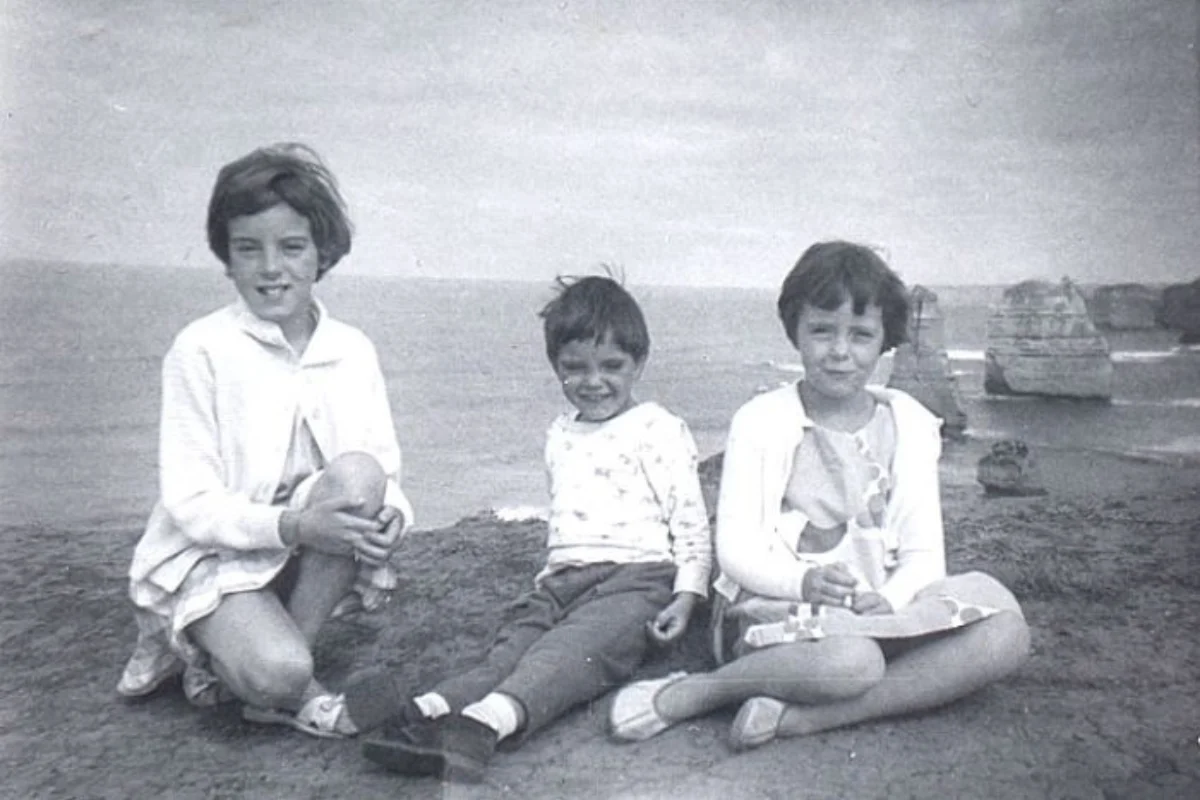The disappearance of the Beaumont children, which will turn 56 years old next January, is the most famous unsolved case in Australian criminal history. There is still no credible information about what happened to the children.
On January 26, 1966, Jane Natarre Beaumont (9 years old), Arnna Kathleen Beaumont (7 years old), and Grant Ellis Beaumont (4 years old) disappeared without a trace.
The children lived in a suburb of Adelaide, South Australia with their parents Jim and Nancy and often visited the popular beach resort Glenelg. In the 1960s, crime was low, especially in Australia which was considered a safe and developed nation, and society was considered safe for children.
Jane, Arnna, and Grant were allowed to play outside, and on the national holiday “Australia Day,” they were allowed to go to the nearby beach.
Jane was proficient with the local bus routes and had completed the same journey the day before, so the family had no concerns about letting the children go to the beach on their own. The beach was only a five-minute ride away, and the children had always returned home safely. However, on January 26, 1966, they did not.
The Beaumont Children: Sudden Disappearance

Jane, the oldest, was trusted to care for her younger siblings, so the children took the 8:45 a.m. bus to the beach, following their mother’s advice to save money for transportation and lunch. They planned to spend the morning by the sea and return home by 2 p.m.
When Jim, the children’s father, arrived home from work at 3 p.m. and saw that the children hadn’t returned, he immediately went to Glenelg Beach to look for them. He checked the bus station and searched the beach but found nothing. He and Nancy then went door-to-door in their neighborhood to find the children.
When that failed, the parents went to the Glenelg Police Station at 7:30 p.m. and reported their children missing. This began Australia’s most infamous investigation into the disappearance of the Beaumont children.
In Search For A Predator
The next day, a reward of $250 was offered to the public for information leading to the finding of the children. Leads showed that they were seen in the company of a tall man and seemed happy to be with him.
Many witnesses saw the tall man take the children, but he was never identified. No trace of them has been found in the many years since, and the disappearance of the Beaumont children remains a mystery after more than half a century. Information about the children was scarce.
Despite a local marina being searched after a woman reported seeing three children matching the Beaumont children’s descriptions there on January 26, nothing was found.

The police became suspicious that the children had been taken by someone they knew when their parents, Jim and Nancy, reported that Jane, the eldest, was shy and quiet around strangers. They believed the abductor had gained the children’s trust and friendliness through previous socializing.
Witnesses at Glenelg Beach that day described a tall, thin man in his 30s, characterized as a “sun-baked swimmer” in a blue swimsuit, escorting some kids into the distance. Some said the children seemed familiar with the stranger.
A postman who knew the children claimed to have seen them between early and mid-afternoon, joyful and smiling, seemingly heading home without any adult accompaniment. Although his statement was seen as credible, there was disagreement over the exact time he would have seen the children.
Nancy Beaumont suspected that the children had been befriended by a sun-kissed predator after Arnna had previously told her mother that Jane “had a boyfriend down the beach.” Initially thought to be a joke, Nancy now believed this person had been interacting with her children for a long time.
The Possible Suspects

Police pursued hundreds of leads with the sun-baked man’s sketch on television, but the vast majority turned out to be unhelpful and ineffective. Despite many people approaching the police claiming to have seen him that day, no substantial leads emerged.
The initial aggressive investigation into the case of the missing Beaumont children eventually slowed down due to a lack of results. Over the years, multiple suspects, including known child predators, were interviewed, but any connections made with other missing children cases were largely speculative.
In 1966, police brought in Dutch clairvoyant Gerard Croiset to assist with the investigation. Croiset claimed to have seen the children buried in a kiln near their school.
A citizens’ action group organized by the locals raised $40,000 for the demolition and excavation of the property. The investigation lasted a year, but officials found nothing despite the presence of media crews.
Another theory was that the children were living on Victoria’s Mud Islands, but no information was obtained after questioning the crew of a British ship stationed there in 1968.
The claims of a woman from Perth who stated she lived next door to the children in a desolate railway hamlet located between West and South Australia for nine months in 1966 offered more hope, but unfortunately, no clues were found there.

In March 1986, the case appeared to be close to being solved when officials found three suitcases in a home garbage can. The suitcases contained newspaper articles about the missing children, with lines and headlines scratched out and ominous comments written in red ink, including the statement, “Not on the sand hills, in the sewage drain.” However, it was later determined that these records were simply the work of an enthusiastic amateur detective who had been following the case for many years, and her relatives disposed of them after her death.
In 1997, veteran police officer Stanley Swaine believed that a woman in Canberra was the grown-up Jane Beaumont. The police conducted an investigation and interviewed the woman, but she was cleared of any involvement.
On the 40th anniversary of the children’s abduction, Tasmanian Police Commissioner Richard McCreadie theorized that the abductor could have been James O’Neill, a convicted child killer. Derek Percy, another child murderer, was also questioned in relation to the case, but both were eventually ruled out. The most promising information came from Sue Laurie’s disclosures in 1998.
At a soccer game in Adelaide in 1973, Laurie recalls witnessing a confrontation between an elderly man and a crying child. The girl kicked the man as he took her out of the stadium, but years later, it was discovered that they were not related and the child had disappeared. Several witnesses described the man as skinny, in his 40s, and matching a 1966 police sketch.
The mystery deepened in 2013 when two brothers reported to authorities that on Australia Day 1966, a factory owner named Harry Phipps had instructed them to dig a trench at the site.
The area was searched in both 2013 and 2018, but only non-human bones were found. Despite this, Phipps’ son claimed that his father had sexually abused him and he suspected his involvement in the Beaumont children’s abduction.
In 2016, authorities questioned a child molester who lived at Glenelg Beach and worked as a Boy Scout leader in Adelaide in 1966, but no substantial evidence emerged.
Final Words
 The tragedy began when the locals accused the children’s mother of involvement. Nancy Beaumont, 92, passed away in 2019 while at a care facility in Adelaide. Her ex-husband, whom she divorced during the 1966 trauma, is currently alive and well in Adelaide.
The tragedy began when the locals accused the children’s mother of involvement. Nancy Beaumont, 92, passed away in 2019 while at a care facility in Adelaide. Her ex-husband, whom she divorced during the 1966 trauma, is currently alive and well in Adelaide.
Despite the passing of time and extensive investigations, no results were found. The lack of remains made it impossible to prove the possibility of murder. Police explored various theories and followed crucial leads, but ultimately, no concrete conclusions were reached.
Even a famous European clairvoyant’s help proved ineffective, leaving the case unsolved and one of the most famous cold cases in Australian criminal history. Many are still curious about the fate of the Beaumont children.
Many people hope that the children are alive and well, but they would now be middle-aged. However, it is likely that they were either victims of a brutal sexual predator who murdered them and left their bodies, or they were kidnapped and sold for nefarious purposes.
The disappearance of the Beaumont children remains the longest missing person case in Australia’s history, explored in various books, movies, and podcasts.
The tragedy of the Beaumont children’s disappearance remains unresolved and the truth may never be known. They may be dead, imprisoned, or living freely, but this remains a heartbreaking reality for the police, the Australian public, and their parents.



